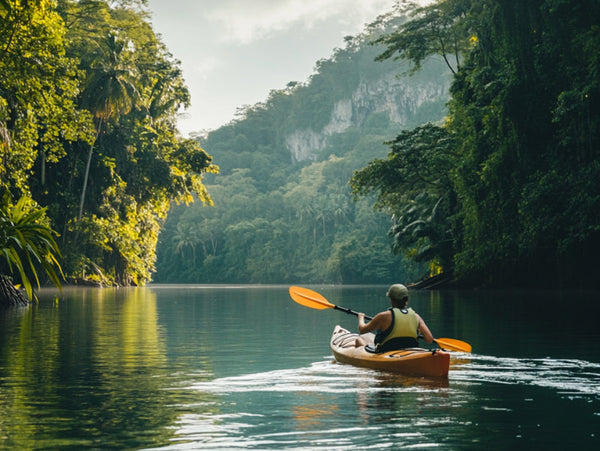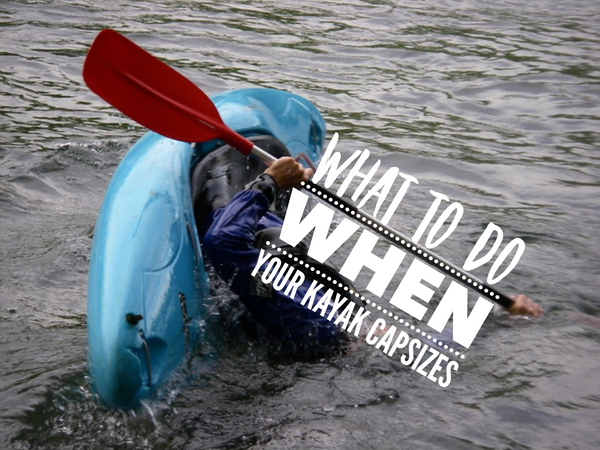Top 5 Tips for Planning a Kayaking Adventure

Do you remember how old you were when you realized that even a little planning goes a long way toward saving time, hassle, and expense in just about any situation?
My father always told me that’s what they call being smart.
Organizing a kayaking adventure is no different.
Sure, getting into the habit of planning smart can take some practice at first. Yet, I’m constantly amazed at how much more smoothly things go when I grab just a few quick minutes the night before a paddling adventure to run through my Important Things to Remember check-list.
This is especially true when I’m planning to paddle with others – my family, for example.
Here’s the list I use.
Assuming you have a paddling put in locale in mind, the evening before you head out:
1.) Check the weather. Use an online weather app such as WeatherWilly to check the wind, air and water temperatures of the location in which you’ll be paddling. Use caution and wear a wet suit, paddling gloves and neoprene cap if water temps are expected to be below 65°. Most beginner to intermediate paddlers can handle winds up to 5-6 mph in smooth water. Much above that and you’ll be wise to avoid that location until breezes are calmer.
2.) Pack smart. Travel light, but stash a windbreaker, paddling gloves, sunscreen, hat, sunglasses, whistle on a lanyard, water shoes, compass, water bottle and a couple of high protein snacks in your day pack. A plastic mobile phone carrying case is a good idea, too.
3.) Safety first. Remember to bring a well-stocked, conveniently-sized first-aid kit that you can stow onboard for the day. A personal flotation device (PFD) is crucial, too.
4.) Review your routes. Go on Google maps or other reliable map or chart and review the route leading to and from your paddling put in. Be sure that the put in you’ve chosen is accessible; some boat launches are private for residents only, or require a permit. Also review the route you plan to paddle. If possible, look to avoid super shallow water where sunken boulders might be a hazard – especially in drought-prone lakes and rivers. Also plan a route that avoids waterway channels where power boats may be traversing and creating dangerous wakes for kayakers. Naturally, kayaking after sunset is not recommended at any time.
5.) Check racks, cam straps, tire pressure and mechanical gear. Do a thorough safety check on your kayak transport equipment. Using a roof rack? Make sure it’s secure and locked in place for loading and traveling. Trailer? Ensure all tail lights are working properly, tires are well inflated, and couplings are all secure. Check that all your tie downs or cam straps are intact and ratchets are all in good working order. Remember to have your bow and stern tie down straps ready to be secured if you’re using a roof rack.
From there, you’re good to go!
Get a great night’s sleep and breakfast in the morning.
Finally, load up your gear, grab your PFD, your favorite paddle, hop on the road and head out for another amazing experience in the great outdoors!
As always, safety on and off the water should always be the top priority for everyone at all times. But you already knew that, right?
Enjoy!
Spread The Word & Pin It 😊
Disclosure: BEST Marine and Outdoors is a participant in the Amazon Services LLC Associates Program, an affiliate advertising program designed to provide a means for sites to earn advertising fees by advertising and linking to Amazon.com. This means if you click on the links above and purchase an item, we will receive an affiliate commission at no extra cost to you.
Leave a comment
Comments will be approved before showing up.
Also in Blog

How to Choose the Right Kayak Anchor
Choosing the right kayak anchor can make all the difference when it comes to staying steady on the water. This guide walks you through everything you need to know about selecting the perfect folding kayak anchor

What To Do When Your Kayak Capsizes
Although kayaks are designed for stability no matter the conditions, accidents happen and knowing what to do can help you avoid an unpleasant experience. Preparedness and technique are key components to controlling a sometimes scary situation.


